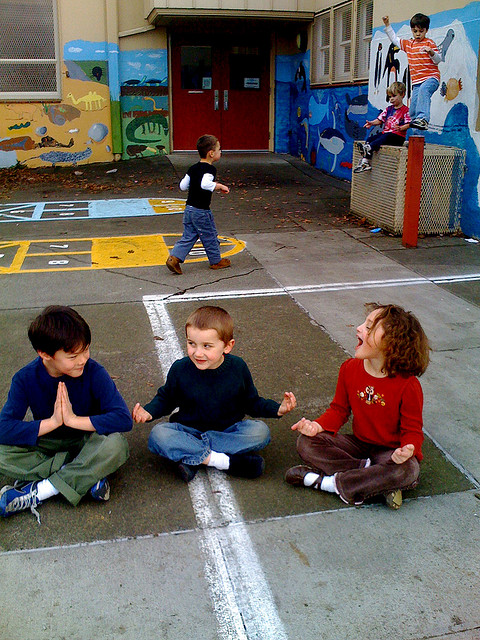
“One looks back with appreciation to the brilliant teachers, but with gratitude to those who touched our human feelings. The curriculum is so much necessary raw material, but warmth is the vital element for the growing plant and for the soul of the child.” ~ Carl Jung
There is a common myth about meditation that it means always being calm and collected, never being upset, sad or freaked out.
It’s simply not true.
While meditation and mindfulness practices can help us become more tranquil, centered and patient, they do not eliminate difficult emotions.
On the contrary, it can seem to exacerbate them, especially as we begin or deepen our practice, because there is nothing to do but sit (or stand, or walk) there and be with those emotions, allowing them to rise up and pass away in due time.
As I was reading a book a few months back called Planting Seeds (which is a guide for anyone interested in introducing children to mindfulness and meditation) by Thich Nhat Hanh and members of his sangha, I came across this little gem which jumped off the page and deep into my heart immediately:
“Breathing in, I’m bored. Breathing out, it’s okay to be bored.”
It was in the context of a chapter on teaching children how to observe and accept their feelings, whatever feelings they are experiencing in that moment: joy, sadness, boredom, anger, confusion, frustration, contentment.
I saw right away that this simple technique could also help adults.
Could also help me.
And so, I’ve started using it every day in my classroom, which this year miraculously consists of just three homeschooled fifth grade students. In our morning meeting at the start of each “school” day, we ring the Tibetan bowl and take turns sharing our feelings, if we want.
Most days, the kids will say something like, “Breathing in, I feel happy, excited, happy and excited. Breathing out, it’s okay to feel super happy and excited.” They then elaborate on what specifically is making them feel so blissful and excited. One of them often says, “I’m happy because today’s today,” which never fails to melt my heart.
Sometimes, though, they (and I) admit, “Breathing in, I feel tired, sad, worried, confused and grateful. Breathing out, it’s okay to feel tired, sad, worried, confused and grateful.” And often, we elaborate on why. In this way, we get to know each other better and realize that we all share similar emotions and challenges.
This technique is wonderful because it reminds us that whatever is coming up for us is okay. It doesn’t need to be changed, repressed, pursued or pushed away. It just is what it is. And it’s always changing.
I hope you’ll give it a try. If you’re a teacher, try it with kids or teens, and let me know how it goes. May it be of benefit!
~
Relephant:
The Wisdom of Escape: 8 Great Reasons to Go on Retreat.
~
Author: Michelle Margaret Fajkus
Editor: Travis May
Photo: Flickr/Todd Fahrner










Read 0 comments and reply